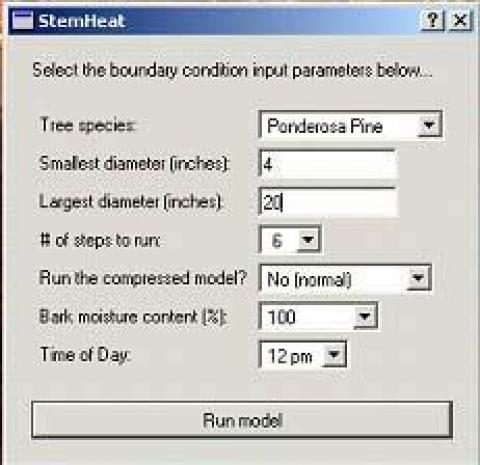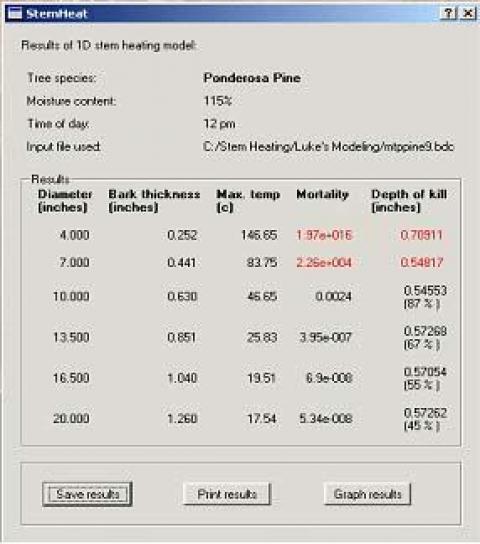Often fires are managed to support or reduce the presence of specific plant species or sizes. FireStem is a computer model designed to aid fire managers in predicting tree mortality based on fire behavior and intensity.
FireStem was designed to simulate energy transport from a fire to the plant stem and through the stem. Based on temperature magnitude and time it predicts cambial cell mortality. Ideally, the user will be able to input a range of species for a given ecosystem, run FireStem and review the mortality prediction for a range of diameters for each species. To date, we have developed and validated FireStem for four species, Douglas Fir, Ponderosa Pine, Chestnut Oak, and Red Maple. The mortality predictions used in FireStem are based on recent work by Dr. Matthew Dickinson at the USFS Northeastern Research Station and include the latest understanding of cambial tissue response to thermal injury. Other species will be added as their thermophysical properties are identified and validated.
FireStem2D is a computer model designed to aid fire managers in predicting tree mortality based on fire behavior and intensity.
FireStem2D is a physically-based two-dimensional model of stem thermodynamics that results from heating at the bark surface. It builds on an earlier model (FireStem) and provides improved capabilities for predicting fire-induced mortality and injury before a fire occurs by resolving stem moisture loss, temperatures through the stem, degree of bark charring, and necrotic depth around the stem. The realism and dynamics of this model allow it to be linked to any fire behavior model that provides a detailed fire (heat) flux time series as would be produced at different heights above ground and locations around the stem as a function of fire intensity, tree diameter, fuel type, and environmental conditions.
FireStem2D simulates temperature distribution caused by incident heat flux around a stem at a given height above ground in 2 dimensions in tree stem sections of a variety of species. Longitudinal energy transport is not simulated.
FireStem2D could be broadly applied given further parameterization for the thermal parameters of other dominant tree species in different regions. Simpler empirical assumption of fire-line heat could also be used by FireStem2D, however, in order to really utilize the full advantages of a 2D model, empirical understanding of the role of wind in the heat distribution around the stem should be incorporated in the heat forcing.
The expanded applicability of FireStem2D makes it a useful tool that can simulate heat transfer in many different tree species. The model has very broad applicability; it can be parameterized for any species and predict necrotic depths for any species under any heat-flux conditions. The use of heat-flux boundary conditions makes it possible to couple FireStem2D to a fire behavior model.

